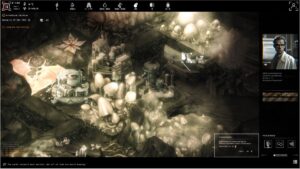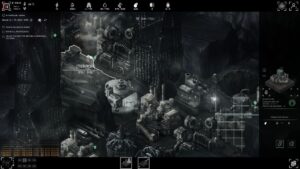In the realm of strategy games, the act of commanding units and managing resources is often the core experience. However, when intertwined with compelling storytelling and rich lore, this gameplay transforms into something far more profound. This is particularly true for games that aim to evoke dread and tension, where the narrative becomes a vital tool for amplifying the strategic stakes. Let’s delve into how enhancing storytelling and lore can elevate strategy gameplay, using the compelling, example of Anoxia Station.
The Power of Lore in Creating Atmosphere:
Anoxia Station, a strategy game set in a decaying, isolated mining station, thrives on its meticulously crafted lore. The station, once a beacon of scientific progress, is now a labyrinth of corroded corridors and abandoned research labs, haunted by the echoes of past experiments gone awry. Every scrap of data log, every cryptic message, and every environmental detail contributes to a growing sense of unease. This rich lore isn’t just background; it’s a strategic element, shaping player decisions and fueling their dread.
Storytelling Through Gameplay Mechanics:
In Anoxia Station, the gameplay mechanics themselves are interwoven with the narrative. Resource management, for instance, isn’t just about efficiency; it’s about scavenging for dwindling supplies in a mine where vital systems are failing. Every expedition into unexplored sectors carries the risk of encountering monsters or remnants of previous expeditions. This integration of story and gameplay amplifies the dread, making every strategic choice feel fraught with consequence.
Environmental Storytelling and Visual Dread:
The visual design of Anoxia Station is a masterclass in environmental storytelling. Decaying machinery, flickering lights, and unsettling organic growths contribute to a palpable sense of isolation and decay. The environment isn’t just a backdrop; it’s a character, whispering tales of past horrors and hinting at the sinister secrets that lurk within the station’s depths. This visual storytelling enhances the strategy gameplay, making every exploration feel like a descent into madness.
Unraveling the Mystery Through Strategic Choices:
Anoxia Station’s narrative unfolds through player actions. Strategic decisions, such as choosing which research labs to explore, directly impact the story’s progression. Players are not just commanding units; they are unraveling a mystery, piecing together fragments of information to understand the station’s tragic fate. This interactive storytelling elevates the strategy gameplay, creating a sense of agency and investment.
The Psychological Impact of Narrative-Driven Strategy:
The dread in Anoxia Station is cultivated through the slow burn of narrative tension. The player is constantly questioning their surroundings, anticipating unseen threats, and grappling with the moral implications of their choices. This psychological impact enhances the strategy gameplay, making every decision feel weighty and consequential.












